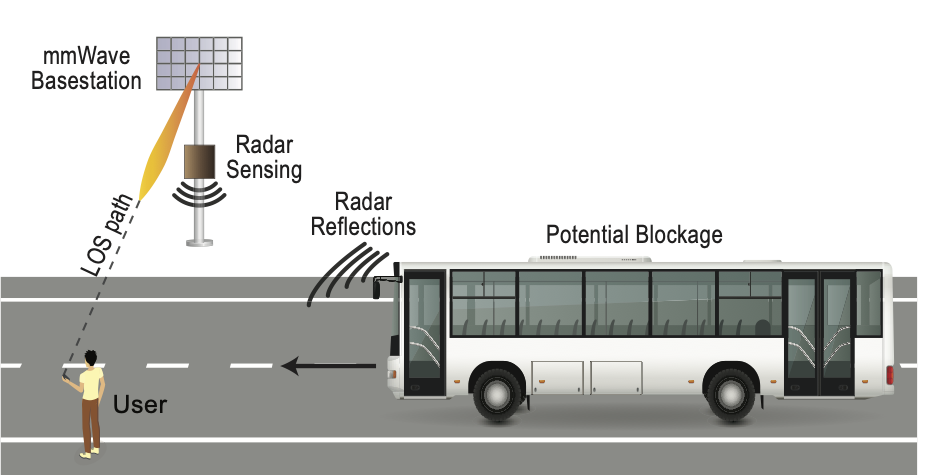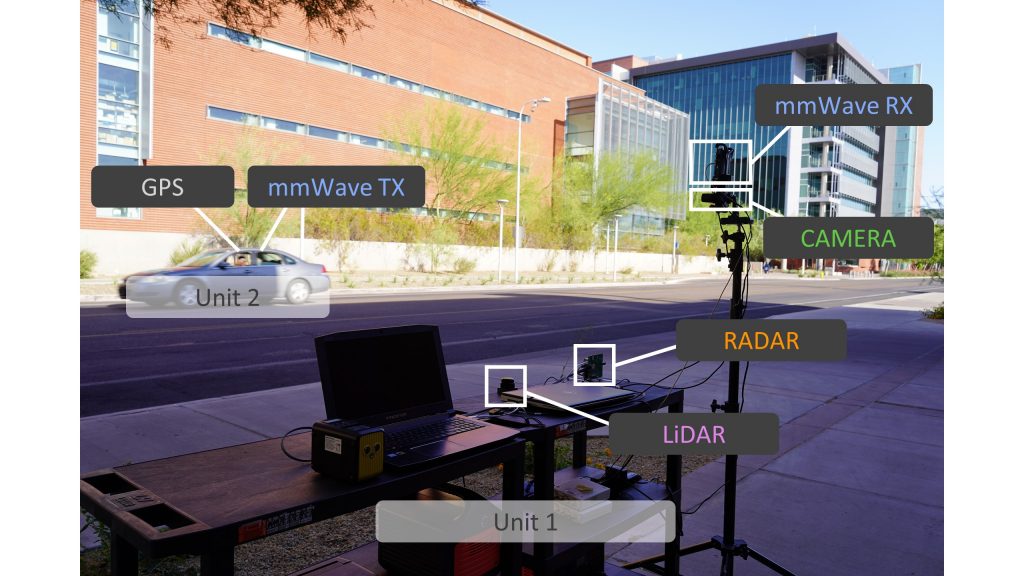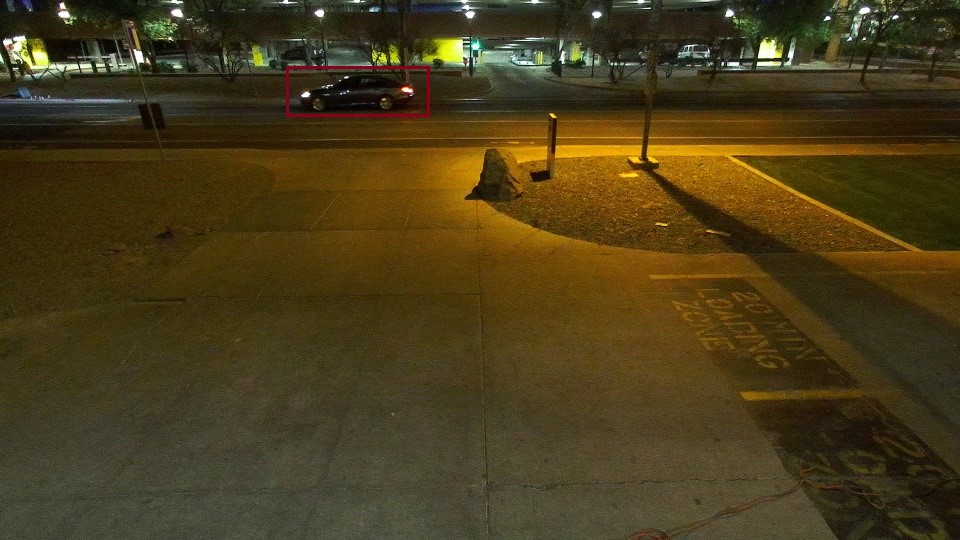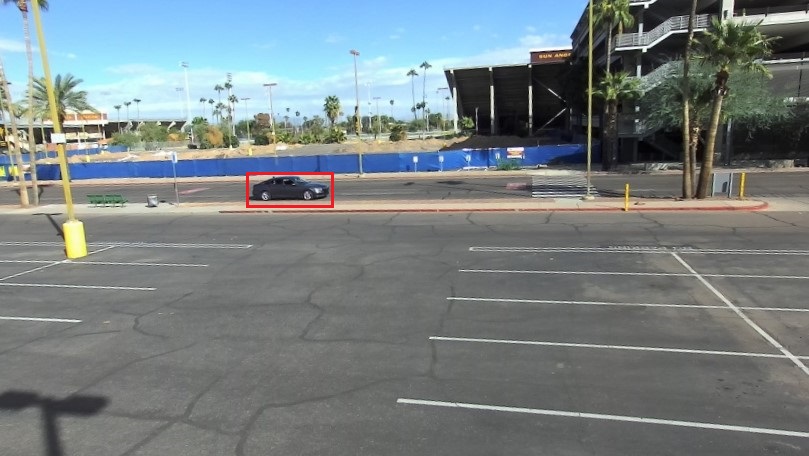Radar Aided Proactive Blockage Prediction in Real-World Millimeter Wave Systems
IEEE International Conference on Communications (ICC) 2022
Umut Demirhan and Ahmed Alkhateeb
Wireless Intelligence Lab, ASU

Given a set of radar observations of the wireless environment, can the mmWave/sub-THz basestation predict the blockage before it happens?
Our machine learning-based solution can leverage such sensing data for efficient mmWave/THz blockage prediction.
Abstract
Millimeter wave (mmWave) and sub-terahertz communication systems rely mainly on line-of-sight (LOS) links between the transmitters and receivers. The sensitivity of these high-frequency LOS links to blockages, however, challenges the reliability and latency requirements of these communication networks. In this paper, we propose to utilize radar sensors to provide sensing information about the surrounding environment and moving objects, and leverage this information to proactively predict future link blockages before they happen. This is motivated by the low cost of the radar sensors, their ability to efficiently obtain important features such as the range, angle, velocity of the moving scatterers (candidate blockages), and their capability to capture radar frames at relatively high speed. We formulate the radar-aided proactive blockage prediction problem and develop two solutions for this problem based on classical radar object tracking and deep neural networks. The two solutions are designed to leverage domain knowledge and the understanding of the blockage prediction problem. To accurately evaluate the proposed solutions, we build a large-scale real-world dataset, based on the DeepSense framework, gathering co-existing radar and mmWave communication measurements of more than 10 thousand data points and various blockage objects (vehicles, bikes, humans, etc.). The evaluation results, based on this dataset, show that the proposed approaches can predict future blockages 1 second before they happen with more than 90% F1 score (and more than 90% accuracy). These results, among others, highlight a promising solution for blockage prediction and reliability enhancement in future wireless mmWave and terahertz communication systems.
Proposed Solution

This figure illustrates the proposed machine learning-based blockage prediction solution that leverages the range-angle maps generated by classical signal processing along with the CNN-LSTM model
Video Presentation
DeepSense 6G Dataset

DeepSense 6G is a real-world multi-modal dataset that comprises coexisting multi-modal sensing and communication data, such as mmWave wireless communication, Camera, GPS data, LiDAR, and Radar, collected in realistic wireless environments. Link to the DeepSense 6G website is provided below.
Scenarios



In this beam prediction task, we build development/challenge datasets based on the DeepSense data from scenario 30.
For further details regarding the scenarios, follow the links provided below.
Citation
U. Demirhan and A. Alkhateeb, “Radar Aided Proactive Blockage Prediction in Real-World Millimeter Wave Systems,” 2022 IEEE International Conference on Communications (ICC), 2022
@inproceedings{Demirhan2022b,
author = {Demirhan, U. and Alkhateeb, A.},
title = {Radar Aided Proactive Blockage Prediction in Real-World Millimeter Wave Systems},
booktitle={2022 IEEE International Conference on Communications (ICC)},
year = {2022},}
A. Alkhateeb, G. Charan, T. Osman, A. Hredzak, J. Morais, U. Demirhan, and N. Srinivas, “DeepSense 6G: A Large-Scale Real-World Multi-Modal Sensing and Communication Datasets,” to be available on arXiv, 2022. [Online]. Available: https://www.DeepSense6G.net
@Article{DeepSense,
author = {Alkhateeb, A. and Charan, G. and Osman, T. and Hredzak, A. and Morais, J. and Demirhan, U. and Srinivas, N.},
title = {{DeepSense 6G}: A Large-Scale Real-World Multi-Modal Sensing and Communication Dataset},
journal={to be available on arXiv},
year = {2022},
url = {https://www.DeepSense6G.net},}

